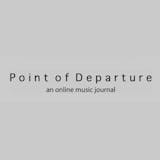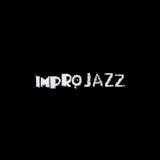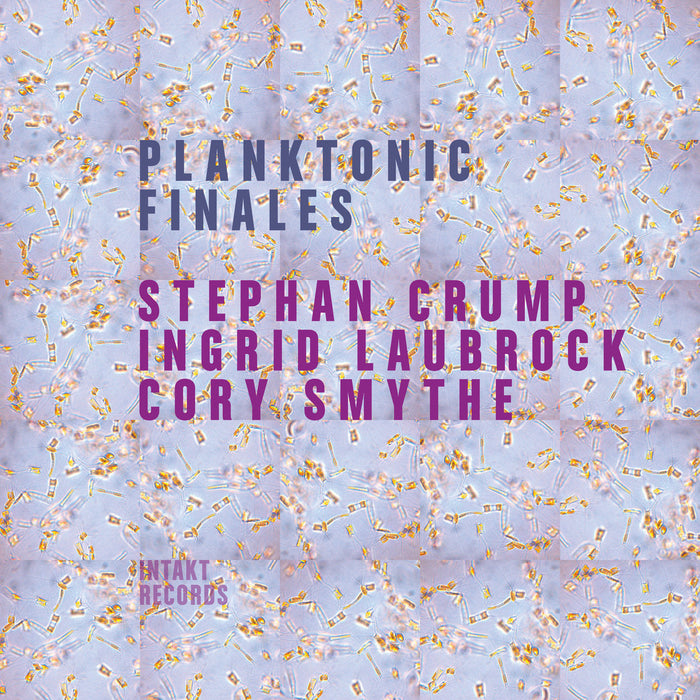
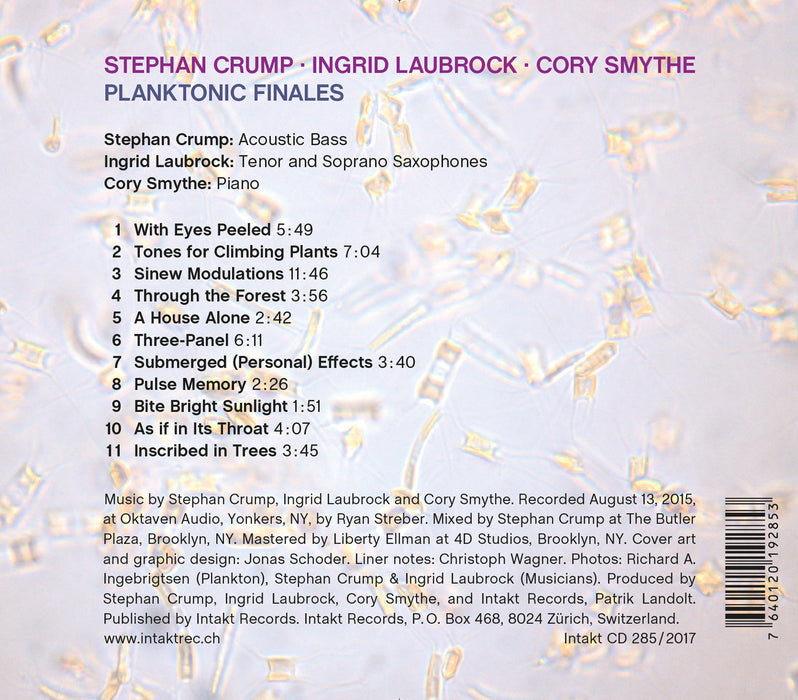
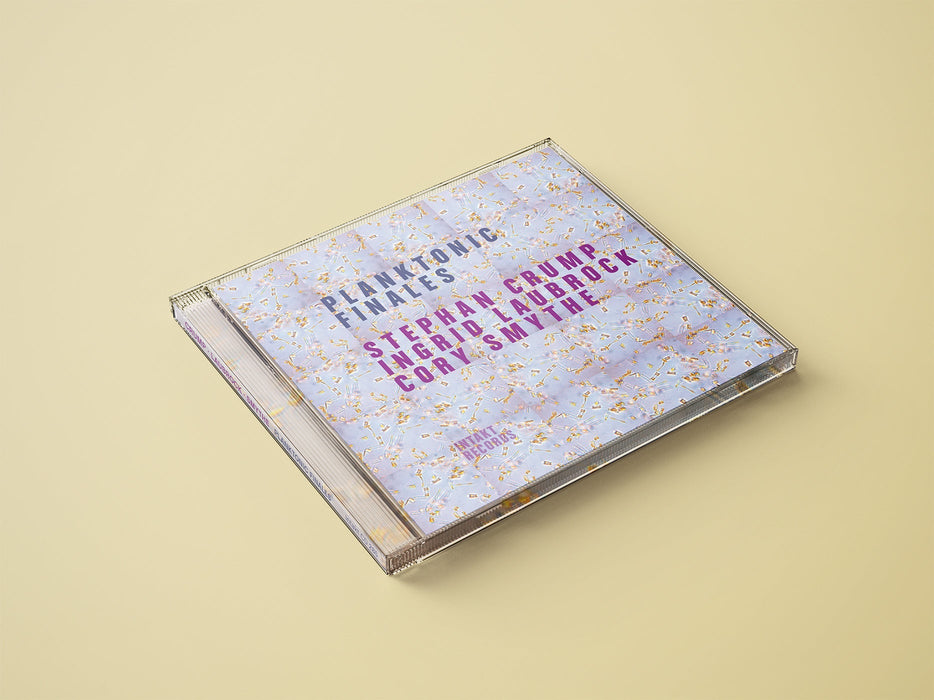
285: STEPHAN CRUMP – INGRID LAUBROCK – CORY SMYTHE. Planktonic Finales
Intakt Recording #285/ 2017
Stephan Crump: Bass
Ingrid Laubrock: Saxophone
Cory Smythe: Piano
More Info
Mit Stephan Crump, Ingrid Laubrock und Cory Smythe haben sich drei der innovativen Improvisatoren und Jazzmusiker der jüngeren Brooklyn-Szene gefunden. Eine intensive und äusserst gelassene Begegnung im Recordingstudio führte zu den Aufnahmen dieser herausragenden CD. Christoph Wagner schreibt in den Liner Notes: «Über weite Strecken ruht die Musik in sich selbst. Lange Töne und spannungsvolle Bögen bestimmen das Klangbild, das introvertiert, ja manchmal fast meditativ wirkt. Für Kontrast sorgen Ausreisser, bei denen das Saxofon expressivere Schreie heraus-schleudert, das Klavier perlende Tonkaskaden einstreut oder stakkatohafte Morsesignale hämmert und der Bass mächtig aus der Tiefe donnert. Faszinierende Sinnestäuschungen stellen sich ein. „Wenn das Gehirn ausgeschaltet ist und die Intuition den Kurs bestimmt, «schöpft man aus dem, was man ist», sagt Crump. «Das Innerste wird nach aussen gekehrt, um es in etwas Schönes und Interessantes zu verwandeln.» Den dreien ist das auf überzeugende Weise gelungen.»
Album Credits
Cover art and graphic design: Jonas Schoder
Liner notes: Christoph Wagner
Music by Stephan Crump, Ingrid Laubrock and Cory Smythe. Recorded August 13, 2015, at Oktaven Audio, Yonkers, NY, by Ryan Streber. Mixed by Stephan Crump at The Butler Plaza, Brooklyn, NY. Mastered by Liberty Ellman at 4D Studios, Brooklyn, NY. Produced by Stephan Crump, Ingrid Laubrock, Cory Smythe, and Intakt Records, Patrik Landolt.
Ingrid Laubrock True Improviser, Serious Composer
After 20 years on the London scene, where she collaborated with brazilian singer Mônica Vasconcelos and was a member of the F-Ire Collective, saxophonist Ingrid Laubrock moved to New York in 2009.
Since settling into the Columbia Heights section of Brooklyn, Laubrock has been making an impact on the scene centered around cutting-edge Brooklyn venues like The Owl Music Parlor, Lun Atico and Roulette, as well as John Zorn's Manhattan performance space, The Stone.
"Moving to New York was an important step," said Laubrock, who topped the category Rising Star-Tenor Saxophone in this year's Critics Poll. "There are so many amazing musi- cians here, and especially as a composer, I feel I can pretty much write anything and find open- minded and great musicians to realize it." Laubrock, who studied in London in 1992 with ex-Jazz Messenger Jean Toussaint and in the States during the summer of 1998 with Dave Liebman, described herself as a reluctant composer. "I didn't start until I was 27 or 28 years old," explained the native of Stadtlohn, Germany. "In retrospect, I think that I was nervous about the finality of putting something down on paper and saying, 'This is me. Then the bug bit and I realized that, like with everything else, you only get better by doing it."
Her composing skills blossomed in New York through her groups Paradoxical Trio (pianist Kris Davis, drummer Tyshawn Sorey), Anti-
House (Davis, guitarist Mary Halvorson, bassist John Hébert, drummer Tom Rainey) and the Ingrid Laubrock Octet (Halvorson, Rainey, pianist Liam Noble, bassist Drew Gress, cellist Ben Davis, accordionist Ted Reichman, trumpeter Tom Arthurs).
"As I was new in New York and it takes time to become part of a scene, I suddenly had more time than I ever had before as an adult," she recalled of her early years in the Big Apple. "That gave me headspace to think about what I did and what I did not want to do. Composing filled those periods."
In addition to Davis, cornetist Taylor Ho Bynum, bassist Stephan Crump (who appears with her and pianist Cory Smythe on the 2017 Intact release Planktonic Finales) and her house-band, Rainey (whom she married in 2010), the saxophonist considers Halvorson to be an essential musical ally."Mary is one of the first musicians I played with in New York, and I am very grateful for that connection, not only as a musician but also as my friend," Laubrock said. "I had heard of her when living in London, but first listened to her play live with [drummer] Tomas Fujiwara's The Hook Up at Barbès in Brooklyn. I was immediately impressed by her unique way of playing. Her compositions are just as true, personal and
creative as her playing. Also, Mary introduced me to Anthony Braxton, who has been the most life-changing musician I have met. So, I owe
her big-time for that." [Laubrock was part of Braxton's Diamond Curtain Wall ensemble and his Falling River Music Quartet.]
Rainey and Laubrock-who met in the U.K. at the 2004 Cheltenham Jazz Festival-have an ongoing duo that highlights their conversational exchanges in a purely improvised setting. Their third duet recording, Buoyancy, was released in 2016 on the Relative Pitch label.
"Ingrid is rare in the sense that she is a true improviser, as well as a serious composer," Rainey said, "meaning she doesn't just write music that is a vehicle for her to solo over. For Anti-House, she brings a unique compositional perspective, as well as her prowess as an improviser. And for my trio and Sleepthief [their trio with pianist Noble],
she brings a personal sound and spontaneity that is completely her own. Our duo is where we can meet and distill everything else we're involved in musically to a very direct improvisational place."
Next up for Laubrock is Pieces For Orchestra With Soloists, an Intakt album slated for release in November. Pieces includes two commissioned works: Vogelfrei, which was premiered in 2014 at Roulette by Braxton's Tri-Centric Orchestra, and Contemporary Chaos Practices, which was premiered at the 2017 Moers Festival by the Cologne-based EOS Chamber Orchestra.
"[Because] the project involves 47 musicians, I count myself lucky to have been able to docu- ment both works," she said.
Fritt frem
Tre av den moderne New York-jazzens fremste stemmer har møtt hverandre og lar det stå til – med suksess.Stephan Crump, Cory Smythe og Ingrid Laubrock – åpen og søkende ny trio.
Den tyske tenor- og sopransaksofonisten Ingrid Laubrock har vært bosatt i New York, nærmere bestemt Brooklyn, rundt ti år. Der har hun blitt stadig mer sentral i mye av det spennende som skjer i skjæringspunktet mellom impro, frijazz og moderne, komponert musikk.
Laubrock hadde hatt ørene på stilk og ant at et samarbeid med bassisten Stephan Crump, som blant annet jobber mye med Vijay Iyer, og pianisten Cory Smythe, en viktig del i trommeslageren Tyshawn Soreys univers, kunne føre til noe.
Laubrock "innkalte" til et treff uten at noe var forutbestemt og kjemien stemte fra første pling. Alle var like begeistra og "øvelse" nummer to blei like godt denne plateinnspillinga. De elleve "låtene" er alle spontant unnfanga og uten trommer framstår de som noe som kanskje kan kalles akustisk kammerfrijazz.
Her har vi med tre lyttere i ultraklassen å gjøre. Smythe, som jeg ikke kjenner fra før, kommer fra samtidsmusikk og bringer helt nye elementer inn her, mens Crump oppleves som den straighteste av de tre – Laubrock er den som står for utblåsningene – bokstavelig talt. Til sammen har de altså skapt noe eget – nok et fint eksempel på at Brooklyn kanskje er den mest interessante bydelen i jazzverdenen nå.
PS Dessuten synes jeg Trump bør avsettes så snart som mulig.
https://torhammero.blogg.no/1523793391_fritt_frem.html
Stephan Crump: Good Vibrations
Originally from Memphis, Stephan Crump has been a Brooklyn resident since 1994. Crump’s abiding interest in creative improvised music has found him collaborating with many of his generation’s luminaries. Eschewing genre conventions, Crump has performed and recorded with a wide range of musicians, from Patti Austin and The Violent Femmes’ Gordon Gano, to Jim Campilongo and the late blues legend Johnny Clyde Copeland. Currently, he can be heard as a long-standing member of Vijay Iyer’s Trio and Sextet, Rez Abbasi’s Acoustic Quartet, and Liberty Ellman’s Sextet, among others. His own ensembles include the duo project Secret Keeper (with Mary Halvorson), the all-string Rosetta Trio (with guitarists Ellman and Jamie Fox), and Rhombal, a piano-less quartet that features Ellery Eskelin, Adam O’Farrill, and Tyshawn Sorey.
Crump hails from an artistic family, and was raised in music by his Parisian mother, an amateur pianist, and his Memphis-bred father, an architect, painter, and jazz drummer. Crump, who initially studied classical piano and alto saxophone, took up the bass guitar at age 13, spending his formative years playing in rock and funk bands around Memphis. Crump received his Bachelor’s degree from Amherst College, where he studied classical contrabass technique under award-winning composer Lewis Spratlin; his collegiate jazz studies included work with Ray Drummond, Frank Foster, and Max Roach. Since embarking on a career in music, the bassist, composer, and bandleader has recorded almost a dozen sessions under his own name, along with numerous film scoring commissions.
This interview was conducted in the winter of 2017, concurrent with the release of two new albums from Intakt Records: Asteroidea, a piano trio effort featuring Kris Davis and Eric McPherson; and Planktonic Finales, the first recording by the collective of Crump, Ingrid Laubrock, and Cory Smythe.
****
Troy Collins: Some biographical information might be beneficial for readers unfamiliar with your background. Your mother and father were both involved in the arts. How did that influence your becoming a musician?
Stephan Crump: My mother, who is from Paris, plays piano, and my father is an architect and painter but also an avid jazz fan and amateur drummer. I grew up in Memphis in the ‘70s and ‘80s, and while there was a lot of music in the house, there was also a lot of live music around town. And creativity, in general. I was exposed to a lot of visual art as well. My uncle, Stephen Crump, who was my childhood hero, is a wood sculptor. From my late teens into early college years, I got to work for him during the summers. His attention to detail, including painstakingly working, sanding, and finishing the wood until it’s almost like skin, as well as his playful, graceful sense of form, had a huge impact on me. In my earlier years, I also got to spend time in the backyard on weekends with my dad as he worked on large-format abstract paintings, as well as “help” him make models of his architecture projects. Also, my grandmother owned and ran a great used bookstore, Burke’s Books, and I spent a good amount of time with her there and at home. Not only did she instill in all of us a love of literature, but she was an excellent storyteller, and I remember being in her lap on the rocking chair, putting in my request for a scary story. She would weave a thrilling tale every time.
Reflecting on all this, now, from so many years later, I believe the sense of storytelling and casting the spell, along with an emphasis on sculpture and form, is as relevant to what I try to do as is all the music I’ve loved ... or almost!
Speaking of love, my first love was Stevie Wonder. Along with Stevie, my father was constantly spinning Monk, Trane, Miles, MJQ, Phineas Newborn, Jr., and other greats, and his system was just on the other side of my bedroom wall, so I was rocked to sleep by, say, Percy Heath more often than not. I always heard and wanted the bass, but my mother had me start with classical piano lessons when I was about 6 years old. It wasn’t until seventh grade that I got my first electric bass, which was a maple-glo Rickenbacker 4001, similar to those played by two of my heroes, Geddy Lee of Rush and Chris Squire of Yes. At that time, I also began a couple of years of alto saxophone in the concert band at the public school I attended. Let me pause, here, and register how thankful I am that there was a music program in the Memphis City Schools.
TC: Can you elaborate on what you feel the public-school music program offered that you don’t think you would have gained on your own, say, taking private lessons and/or playing with friends?
SC: Well, I was taking private piano lessons up until this point, in seventh grade, when I finally got my first bass, and also started with the alto. I switched to private lessons on the bass for a time, but soon moved to just learning off records and watching people, live. My olde...
2017 a vu fleurir les parutions oblitérant les murs entre jazz, musiques improvisées et écrites. Du solo au grand ensemble, ils sont nombreux à explorer cette voie, de Barry Guy à Matt Mitchell, d'Aruán Ortiz à Mat Maneri. Sur "Planktonic Finales", la saxophoniste Ingrid Laubrock, le contrebassiste Stephan Crump (complice de Vijay lyer) et le pianiste Cory Smythe (venu du classique) tissent des pièces subreptices, aux climats oniriques émaillés de brefs embrasements. Quant aux Berlin-London Conversations déclinées trois soirs durant au A-Trane dans le cadre du Jazzfest Berlin, difficile de faire plus spontané que le concert inaugural donné par ce quartette sans batteur ni répétition préalable, union anarchique d'acoustique et d'électrique, de rythmes et d'abstractions, la liberté en étendard.
A freely-improvised meeting of exceptional depth and subtlety, with few headlong rushes but lots of close listening and sympathetic dialogue. Saxophonist Laubrock's dusky tenor and fleet soprano are essential, but equally so are the patient, nuanced contributions of pianist Smythe and bassist Crump, both of whom develop the music with meticulous attention to detail and a complete willingness to surrender themselves to the group's collective sound. A captivating listen, and one that tends to reveal its charms more fully with each encounter.
https://www.allaboutjazz.com/troy-dosterts-best-releases-of-2017-by-troy-dostert
Die mit der freiheit
Kaum einer europäischen Jazzmusikerin ist es bisher gelungen, dauerhaft in den USA Fuss zu fassen. Die deutsche Saxophonistin Ingrid Laubrock aber lebt seit neun Jahren in Brooklyn und gehört mittlerweile zu den wichtigsten Musikerinnen der amerikanischen Avantgarde-Szene. Am unerhört!-Festival ist sie in unterschiedlichen Besetzungen drei Mal zu hören.
Jazz ist Freiheit. Genauer: geschenkte Freiheit. Nur selten müssen Jazzmusikerinnen und -musiker um ihre Freiheit kämpfen, und cann meist nur gegen dreiste Produzenten, die zu wissen meinen, wie man den Markt bedient. Ansonsten: Niemand muss, alles ist erlaubt. Erstaunlicherweise aber machen die wenigstens Musikerinnen und Musiker von dieser Freiheit so richtig Gebrauch. Lieber halten sie sich an die gängigen Konventionen und Regeln, klammern sich an Noten und Arrangements. Sich die Freiheit, sich Freiheiten zu nehmen, braucht Mut und birgt Risiken.
Die 47-jährige Saxophonistin und Komponistin Ingrid Laubrock hat sich früh die Freiheit genommen, ihren eigenen Weg zu gehen. Einen Tag nach dem Abitur packte sie, kaum 19 Jahre alt, ihre Sachen und haute ab zu ihrem Freund nach Berlin Stadtlohn, sagt sie, die kleine Provinzstadt im Münsterland, war ihr schon lange zu klein geworden, und es gab Familienprobleme.
IN LONDONS UNDERGROUND
Nach fünf Monaten reisten die beiden für ein Wochenende nach London und blieben gleich da - Ingrid Laubrock gar für die nächsten acht Jahre. Als Kind hatte sie jahrelang Klavier gespielt, jetzt aber wollte sie Saxophonistin werden. Ein waghalsiger Sprung ins kalte Wasser, denn Laubrock musste fast vom ersten Moment an irgendwie von ihrer Musik leben. Dass sie mitunter auch in der U-Bahn spielte,
um das Geld für Miete und Essen zusammenzukriegen, gehört mit zu den Anekdoten ihrer Londoner Anfangszeit.
Eine Weile nimmt sie Unterricht bei Jean Toussaint, einem bis heute unterschätzten karibischstämmigen Saxophonisten, der in den USA unter anderem mit Wallace Roney und Art Blakeys Jazz Messengers gespielt hat und an der renommierten Londoner Guildhall School Of Music and Drama als Dozent arbeitete. "Er hat mir viel über Harmonien, Artikulation und Emotionalität beigebracht", meint sie im Gespräch. Später nahm sie an Workshops von Dave Liebman teil, einem, wie auch einige Zürcher Musiker schon erfahren haben, unerbittlich strengen musikalischen Zuchtmeister. "Er war so gnadenlos ehrlich zu mir, dass ich danach für lange Zeit täglich fünf bis zehn Stunden geübt habe." Später absolvierte sie an der Guildhall School doch noch einen einjährigen Studiengang.
NEUGIERIG AUF ALLES, WAS KLINGT
Wichtiger aber war ihr die Praxis auf der Bühne, in Clubs und auf Festivals: Eine Weile arbeitete sie zusammen mit der in England populären brasilianischen Sängerin Monicà Vasconcelos, die, ganz in der Tradition von Gilberto Gil und Caetano Veloso, Samba, Pop und Jazz zusammenmischte. Vor allem aber arbeitete sie im Musikerkollektiv F-IRE mit - in der Langversion: Fellowship for Integrated Rhythmic Expression-, das mit unterschiedlichsten Musiken zwischen Jazz, freier Improvisation, elektronischer, klassischer und afrikanischer Trommelmusik experimentierte. Zum breiten Spektrum ihrer damaligen Aktivitäten gehörten übrigens auch die Punk-Band Siouxie and the Banshees sowie der wilde Anarcho-Punk- Bassist Luc Ex und der legendäre Musik-Kauz Lol Ccxhill. Für den neugierigen, offenen Blick, mit dem Laubrock heute alle möglichen Musiken begegnet, muss ihre Zeit mit F-IRE ganz wichtig gewesen ein.
Nach einem Studienaufenthalt bei der amerikanischen Pianistin Myra Melford, damals schon eine intime Insiderin der experimentellen New Yorker Loft-Szene, fand sie im Pianisten Liam Noble einen Musiker, der auf derselben Wellenlänge funkte. Nach einer Duo- Platte erweiterte sie das Duo um cen Schlagzeuger Tom Rainey zum Trio Sleepthief. Die gleichnamige erste CD (2008 auf Intakt) provozierte die Kritiker weltweit zu Hymnen und Lobgesängen. Chris May, Kritiker des durchaus kompetenten amerikanischen Jazz-Online-Portals, jubilierte, Laubrock sei derzeit die "kühnste und aufregendste Saxophonisten der ganzen Welt", und selbst die sonst etwas steife NZZ jubelte wie sonst nur bei Karajan. (Dass der Autor der euphorischen Kritik zugleich die Liner Notes der CD vefasst hat, ist ein kleiner Schönheitsfehler.)
"YOU NEVER KNOW WHAT'S IN THE NEXT ROOM"
In der Tat gehören Sleepthief und das spätere, bis heute existierende Trio von Tom Rainey mit Laubrock und der Gitarristin Mary Halvorson zu den interessantesten Kleinensembles der aktuellen Impro-Szene. Das Stück "You Never Know What's in the Next Room" auf der zweiten Sleepthief-CD "The Madness of Crowds" (Intakt 2010) charakterisiert ziemlich genau das musikalische Konzept der beiden Trios: Alles ist möglich, Intuition und ein sicheres Gespür für Abläufe und Formen ist alles. Die Musik lebt von scharfen Kontrasten: Sanfte, poetische, zuweilen elegisch-melancholische Passagen wechseln sich ab mit ...
De uit Duitsland afkomstige saxofoniste Ingrid Laubrock woont inmiddels al weer enige tijd in New York, sinds 2008 om precies te zijn. Terugkijkend blijkt het meer dan een verstandige beslissing, zowel voor Laubrock zelf als voor de New Yorkse avant-garde scene. Het aantal musici waar zij sindsdien haar groepen mee formeert is gestaag gegroeid en een deel vinden we dan ook terug op twee recent bij het Zwitserse Intakt verschenen cd's. Boeiend aan de twee albums is tevens dat ze Laubrock zowel laten horen in de rol van componist ('Serpentines') als in de rol van improvisator ('Planktonic Finales').
Voor 'Serpentines', waarvoor Laubrock alle composities leverde, bracht ze een wat ongewoon septet samen. Dat er twee blazers inzitten - met naast Laubrock op tenor- en sopraansax trompettist Peter Evans - is allesbehalve ongewoon en dat we een drummer en een pianist aantreffen, respectievelijk Tyshawn Sorey en Craig Taborn, is dat evenmin. Maar dat we een tuba, bespeelt door Dan Peck, vinden in plaats van een bas is al minder voor de hand liggend en dat we Miya Masaoko aantreffen met de koto, een Japanse variant van de zither, is met recht bijzonder te noemen, evenals de medewerking van Sam Pluta met zijn vreemde, door elektronica voortgebrachte geluiden. Met dit septet creëert Laubrock een bijzondere muzikale wereld, zoals we dat inmiddels wel van haar gewend zijn.Neem 'Chip In Brain' dat zo prachtig begint met een ronkende tuba, als een stationair lopende motor van een vrachtwagen, eerst doorsneden met Pluta's vreemde geluiden en met Evans' uithalen en dan met Laubrocks breekbare ijle lijnen op tenorsax, klinkend als een misthoorn. Andere musici vallen bij in deze aan rijkdom winnende klankwereld. Bijzonder is ook 'Squirrels'. Terwijl drums, tuba en in mindere mate piano zorgen voor een blues-achtig ritme, kiezen de blazers het ruime sop en trakteren ons op een overvloed aan atonale noten. En wat te denken van Pecks marsachtige ritme verderop in het stuk dat ineens oprijst uit Pluta's noise. We merkten het al eens eerder op, maar het valt bij het beluisteren van dit album wederom op: Laubrock is steeds meer in eerste instantie componist en dan pas musicus. En dan het type componist dat evenzeer weg weet met het idioom van de jazz als met dat van de hedendaags gecomponeerde muziek.
In de zomer 2015 troffen Laubrock, bassist Stephan Crump en pianist Cory Smythe elkaar voor het eerst in Laubrocks oefenruimte in Brooklyn. De drie kenden elkaar vagelijk, al speelden ze nog niet eerder samen. Maar, zoals Crump opmerkt: "It worked right from the first note, it felt fresh and exciting." En wat doe je dan in zo'n geval? Juist, je neemt een cd op. Eentje vol niet al te lange improvisaties, elf in totaal, waarin volop wordt geëxperimenteerd en waarin die opwinding waar Crump het over heeft voelbaar is. Of planten nu echt groeien op 'Tones For Climbing Plants' hebben we niet uitgeprobeerd, maar het zou zo maar kunnen. Crumps zingende en resonerende bas klinkt hier in ieder geval aantrekkelijk genoeg en Laubrock op sopraansax is een genot voor het oor. De titel 'A House Alone' dekt in ieder geval wel volledig de lading. Middels losse klanken, die de tijd krijgen om weg te sterven, creëert het trio hier in nog geen drie minuten een verstilde wereld. Je ziet het huis liggen, met de meest nabije buur op een half uur rijden. Grappig is 'As If In Its Throat'; het klinkt net zo ongemakkelijk als die graat die in je keel blijft steken.
https://draaiomjeoren.blogspot.com/2017/08/cds-ingrid-laubrock-serpentines-intakt.html
Formerly London-based, Ingrid Laubrock has subsequently established a name for herself over her eight years on Brooklyn's leftfield jazz and improv scene and has recorded prolifically with the likes of Mary Halvorson, Tom Rainey and Ralph Alessi to name a few, and more recently with Craig Taborn for last year's excellent Serpentines CD on Intakt. This recording sees her collaborate with a new set of improvisers: the Vijay lyer trio sideman Stephan Crump on double-bass and New Music- influenced improvising pianist Cory Smythe. You can see why Laubrock was motivated to pursue this line-up following a couple of impromptu rehearsals. The free- flowing energy between the three participators is highly tangible. There's a melody-driven aspect connected to the impressionistic and abstract collective ethos forming the narrative of these pieces. Containing both intense drama and conversational intimacy, it's a very listenable recording that draws from a diverse vocabulary.
Saxofonistin Ingrid Laubrock hat den Anstoß zu diesem Trio gegeben, das sich ganz der Improvisation hingibt, dem spontanen Schöpfen aus dem Augenblick ohne thematische Vorgaben. Mit dem Bassisten Stephan Crump und dem Pianisten Cory Smythe hat sie idealtypische Mitstreiter gefunden. Smythe kommt eigentlich aus der avantgardistischen E-Musik und bringt das Denken in kompositorischen Strukturen mit. Zurückgenommen sind die Sounds, von einer fein pulsierenden Melancholie umhüllt. Sorgsam werden die Töne gesetzt, der Pause das ihr zustehende Recht gegeben. Verdichtungen und Crescendi sorgen zwischendurch für dramatische Höhepunkte und Spannungsbögen. Nur selten wird der konventionelle Gebrauch der Instrumente verlassen, der Bass beklopft, im Bauch des Pianos gewühlt. Das ergibt immer wieder Abwechslung und schöne Brechungen. Nichts ist lautstark oder gar polternd, aber alles schlüssig und vom guten Zuhören bestimmt. Es würde sich lohnen, mehr von dieser Formation zu hören.
Le choix de l'horizontalité pour commencer. Entreprendre l'horizon, le moduler sans le brusquer, ne pas noyer le souffle une entrée somme toute classique dans le cadre des musiques improvisées européennes. Sauf que Stephan Crump et Cory Smythe sont de purs yankees et qu'Ingrid Laubrock est depuis de nombreuses années résidente new-yorkaise. Résumé de supermarché l'impro terrasse les frontières.
Puis loin, la saxophoniste instruira ce même horizon sans se dégager d'un souffle velouté tandis que ses deux partenaires (le pianiste surtout) cajoleront de savantes vrilles. La machine s'emballera puisqu'il faut qu'elle s'emballe. Ils ne feront aucunement l'économie des fourmillements, des glissendis périlleux, des microtons frôlés, des réminiscences d'un jazz vagabond-moribond, des ruches bourdonnantes, des espaces méditatifs, des aventures classico-romantiques, d'un soprano caqueteur, des impressionnismes décantés, des convulsions rugueuses.
Et ils pourront échapper à l'infâme goret Trump et ainsi demander l'asile musical en Europe. Welcome!



